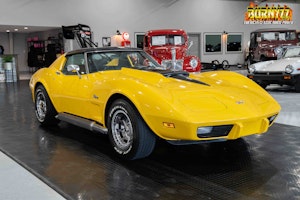Media | Articles
How a blown engine led Seann Burgess to two seasons in Can-Am racing
Thundering machines piloted by the world’s top drivers contested the Canadian-American Challenge Cup for less than a decade in its original, unlimited form. And it was the series most often cited as the pinnacle of sports car racing. But skyrocketing costs and a crippling oil embargo, along with utter domination by Penske’s 917 Porsches, shuttered the no-holds-barred Can-Am era in 1974.
A revival of the series was attempted in the late 1970s – the concept was too cool to abandon entirely – with a more tightly regulated formula. The new rules structure brought a support class of cars limited to engines of less than two liters displacement. Though the glory days of well-funded factory teams and superstar drivers had ended, the opportunity for privateers to do well, as they had at Can-Am’s birth, resurfaced.
Into the fray plunged Seann Burgess of Markdale, Ontario.
Burgess had been successful in Formula Atlantic, and he had won the Canadian Automobile Sport Clubs’ Ontario Regional Championship in 1982 and 1983 as well as the 1982 Driver’s Championship of the British Auto Racing Club-Ontario Centre. His decade-old March 73B with a Cosworth BDA four-cylinder engine won consistently, but when the engine let go during a 1984 SCCA National race at the Mid-Ohio Sports Car Course, a change of direction was in order.
Burgess converted the March to meet the new rules configuration, using replacement front and rear body sections of a McLaren M1B style bought from a Shelburne kayak and canoe builder who had found a niche supplying fiberglass panels to privateers. A Mazda 13B rotary engine from an RX-4 station wagon cost $100. The 13B was rebuilt and a four-barrel carburetor and intake system installed. The Mazda power plant delivered 240 horsepower, accompanied by a deafening exhaust note.
Marketplace
Buy and sell classics with confidence
Burgess and his wife, Carole, would load up and drive to Can-Am races, hauling the racecar and family in a modified 72-passenger Bluebird bus, a 1970 model painted red, yellow and orange. Burgess ran the race at Ontario’s Mosport track in 1985 and most of Can-Am’s final season in 1986. During that season, the pinnacle came at Mosport, where Burgess finished in second place in the under-two-liter class and sixth place overall. The race winner was a 17-year-old Canadian rookie named Paul Tracy.
Burgess intended to restore the car to the livery of its most notable successes in the hands of Bruce MacInnes, a Formula Ford champion, but greater glory would come. Today the March 73B chassis has another Cosworth engine. It sits in the Musee Gilles Villeneuve, dedicated to Canada’s most famous Formula One pilot. Burgess was honored for his contribution and made an honorary president of the museum in 2004.
Burgess has since fashioned a more appropriate Can-Am chassis that is both lighter and stronger. It supports the McLaren bodywork that was on the March chassis and is fitted with the Mazda rotary engine. Burgess turned a few demo laps at Mosport last June, and in September the newly christened Polesitter Mk. 2 was displayed between Ayrton Senna’s Lotus 99T/5 and the Talbot Lago T26C of Pierre Levegh on the lawn at the fourth annual Cobble Beach Concours d’Elegance. Proud of his second place ribbon, his company and the opportunity to drive across the stage, Burgess was certain that the Polesitter was still the “prettiest sports racing car I’ve ever seen, and that does my heart a lump of good.”
20170726013116)









